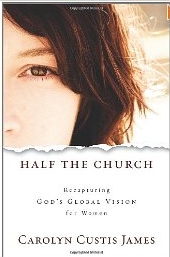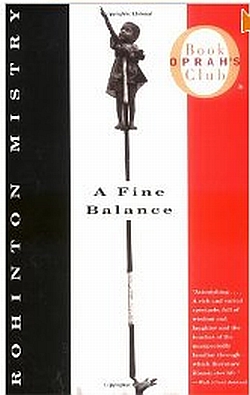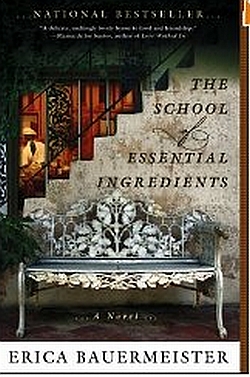 Half the Church: Recapturing God’s Global Vision for Women, Carolyn Custis James, Zondervan, 2010.
Half the Church: Recapturing God’s Global Vision for Women, Carolyn Custis James, Zondervan, 2010.
The title sounded promising. According to the inside back cover, Carolyn Custis James has an M.A. in Biblical Studies – but you would never know it from reading her book. I want to ask, “Does she have half a mind?” If this is a book about the subjugation of women in culture and in the church, this author reinforces all the stereotypes that subjugate women. To be fair, she writes from a patriarchal, privileged perspective herself, although she doesn’t acknowledged this in her book. From the non-gender inclusive language for God to the militaristic images she proposes for women, this woman is moving full speed ahead to make sure that women never experience equality, never mind respect or mutuality.
Her limited interpretation of Genesis leads the reader to believe that she has never read a single feminist interpretation of Genesis. Why not? How did this woman get her college degree much less a master in biblical studies????
Her biblical interpretation reads like an eighth grader’s. Really, if women and men are image bearers – as she writes – why does she insist on using only masculine language for God? There’s an obvious contradiction here and a huge gap in her own training and understanding.
With militaristic imagery throughout – she perpetuates an oppressive, patriarchal agenda; “God created his daughters to be kingdom builders” (76).
To her credit, she rightly notes that the Church’s focus on women as married and mothers only looks at thirty years of a woman’s life and ignores younger & older women, single women – half the population of women (103). A message of virginity and “purity” (whatever that means) for women leaves out women who are abused sexually (104). Here she demonstrates that she actually had access to statistics on women. Why then didn’t she reference statistics on American women’s pay inequality or lack of health care and health insurance compared to men doing the same job? This is pretty selective editing.
She notes early on that women suffering is a global phenomena, “The conversation about God’s vision isn’t American or Western or middle class. It is global. I knew that going in” (19). But evidently “global” doesn’t include Western European or U.S. cultures. For the remainder of the book she focuses on examples of discrimination against women from other cultures – not her own. This is because she is mistakenly convinced that our culture already treats women fairly. She writes, “What makes navigating life for women even more confusing is the fact that we don’t live in a patriarchal culture. The West is egalitarian. Women enjoy the same freedoms, education, career opportunities and potential for success as men.” (158). Wow. What country or culture is she living in?
She actually says this: “Does the gospel’s countercultural message only overturn degrading cultures like those of Reem and Meena, or does it also overturn our own more civilized but equally fallen culture . . .?” (Italics, author’s. 123) Hmmm . . . other cultures are “degrading,” ours is “more civilized”? Sorry, but other cultures are not failed versions of our own culture. Our culture is degrading to women in many ways. However, if possibly, James believes our own culture discriminates against women in numerous ways, she fails to list what they may be.
What has inspired her is Kristoff’s and WuDunn’s book Half the Sky highlighting the abuse of women around the world. Yet her own subjugation to patriarchy is evident and real (although she can’t see it) in the very questions she asked regarding her own life; “Do I plan to use my college degree or set it aside?” Really? Parents who work at home raising their children are not using their education?? She asks, “Should I be a stay-at-home mom or work outside the home?” (36). These questions are VERY life limiting. Very few men ever ask them and those who do are considered different from the culture. No one living in a non-discriminatory culture should have to choose between work and family. Children are the responsibility of both parents and the community. Society should support the work of caring for and nurturing children.
Similar to Half the Sky, James never goes any deeper in trying to understand the systemic issues at stake. On p.40 she clearly realizes that it is women’s own fathers, brothers and uncles who oppress and even murder women but she can’t see this for the systemic genocide that it is. This same genocide is at work in this country too.
The fact is that women earn less than men and are more likely to live in poverty in our country – a country that refuses adequate safety nets for women and their children. Women are impregnated and raped against their will every day of the week right here in the USA. Violence against women in the U.S. – women are killed at the rate of at least 5,000 per year – seems to have escape her. She isn’t safe going into a dark parking ramp at night any more than I am.
Lastly, her proposal of the “Blessed Alliance” is about everyone working together for God’s purposes (146-147). But here it reads more like an alliance with patriarchy, militarism and Western empire. She is aware of her “blessings” in life within her “civilized” culture – but completely unaware that these are actually unearned privileges (not really blessings) caused by benefiting unfairly on the coat tails of patriarchy, white privilege and imperialism. In reality these privileges come at a huge cost – one she refuses to acknowledge. Yet illuminating cultural injustice is the very task of the Christian theologian. The gospel preached by Jesus is subversive for every culture. Ours is not exempt.
However, those of you reading this can learn more about the unearned benefits and ongoing wealth transfer of white privilege here.
Yes, Carolyn is a fully subjugated, oppressed, product of her patriarchal culture. With this shallow, tiny, limited and oppressive view the reader will never capture God’s global vision for women.
I recommend that you read or watch something more worthwhile like The Boy Who Harnessed the Wind, World Class Theologians at Your Fingertips and How Much is Enough?. Then learn more about White Privilege.



